Redefining Foundation
Insulation Systems
Why Close Cell Foam Insulation For Your Foundation?
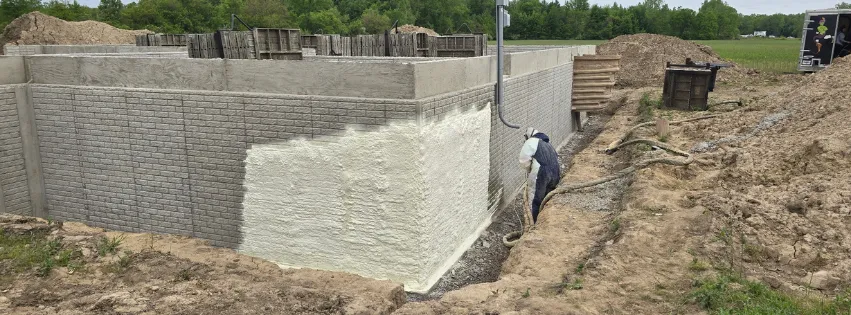
Redefining Foundation Insulation Practices and Improving Industry Standards
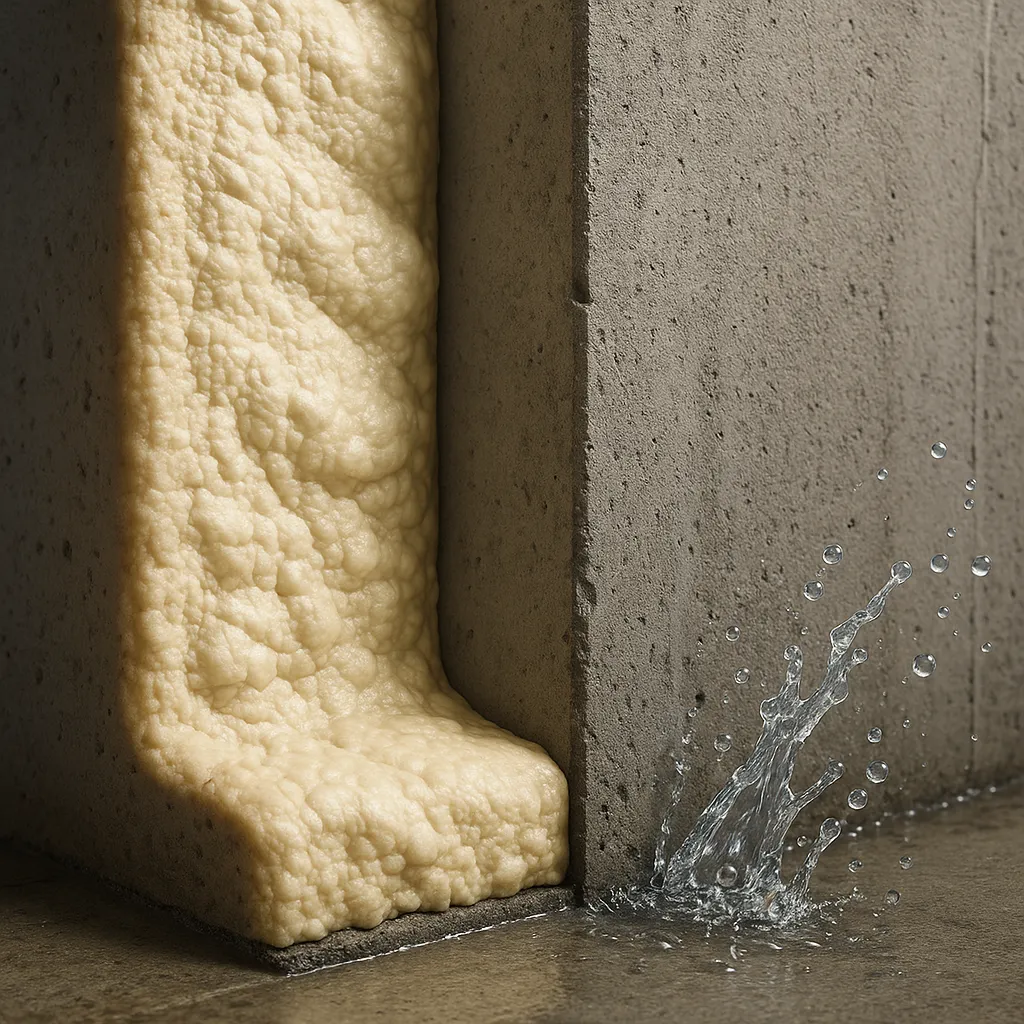
Built‑in Airtight Water Barrier
Closed-cell spray foam does more than insulate—it locks out moisture at the molecular level. Once applied at 1 to 1.5 inches thick, it becomes virtually impermeable, stopping water vapor and moisture in their tracks. That means no extra vapor barrier required. When sprayed directly onto your basement walls, it creates a seamless, airtight, and water-resistant layer that works in tandem with your waterproofing system. The result? Superior protection with fewer materials, fewer failure points, and a much drier, more energy-efficient foundation..
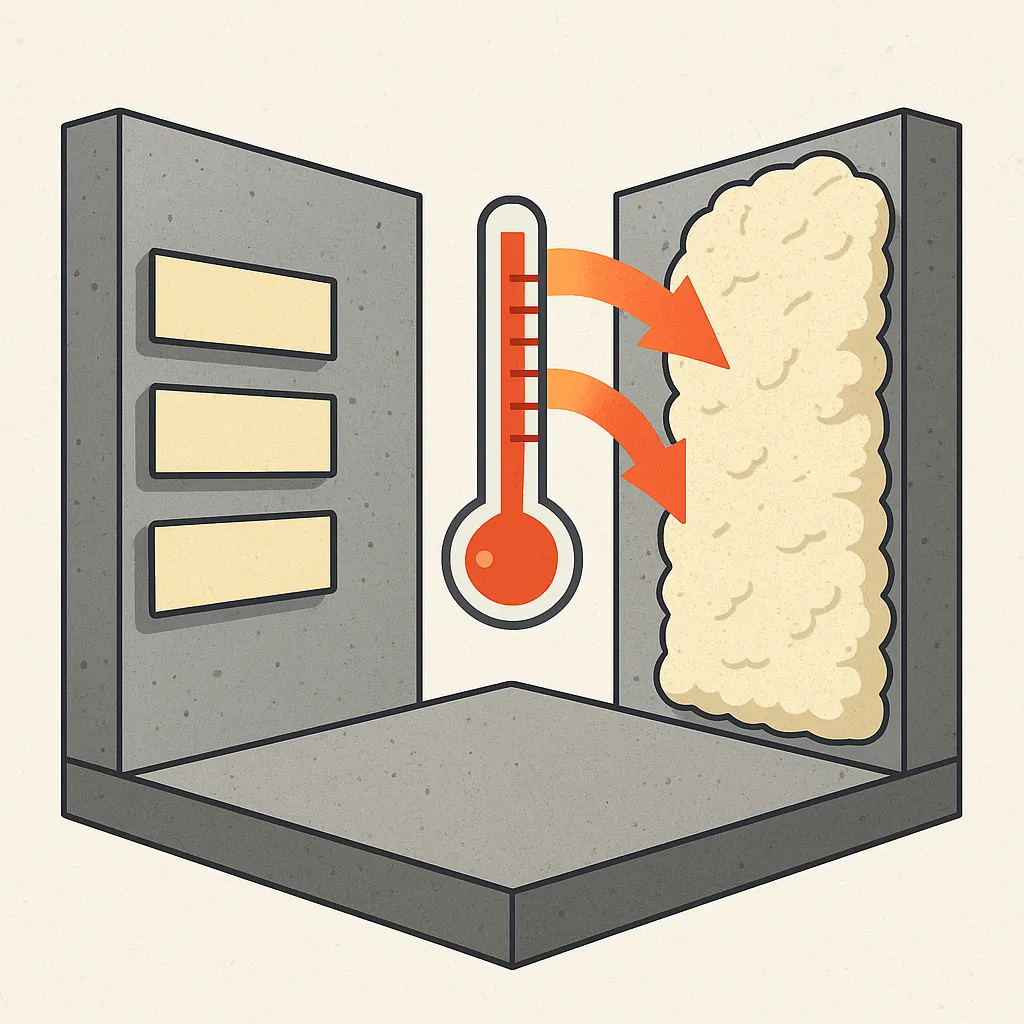
Superior Thermal Regulation
Closed-cell spray foam delivers serious thermal performance, boasting R-values between R-6 and R-7 per inch—well above traditional insulation. That means fewer inches for more impact. This dense, high-efficiency barrier helps regulate temperature at the foundation level, keeping basements cooler in summer and warmer in winter. With less thermal drift and fewer gaps, your HVAC system works less and your energy bills drop. It's not just insulation—it’s temperature control at the structural core.

Energy Efficiency & Comfort Boost
Closed-cell foam expands as it’s applied, filling cracks, gaps, and hard-to-reach corners to form a true airtight seal. That seal can reduce energy loss by up to 50%, keeping conditioned air where it belongs. The bonus? A basement that’s not only more efficient—but noticeably quieter, more comfortable, and better protected from outside elements. This isn’t just insulation. It’s a full-spectrum comfort upgrade.
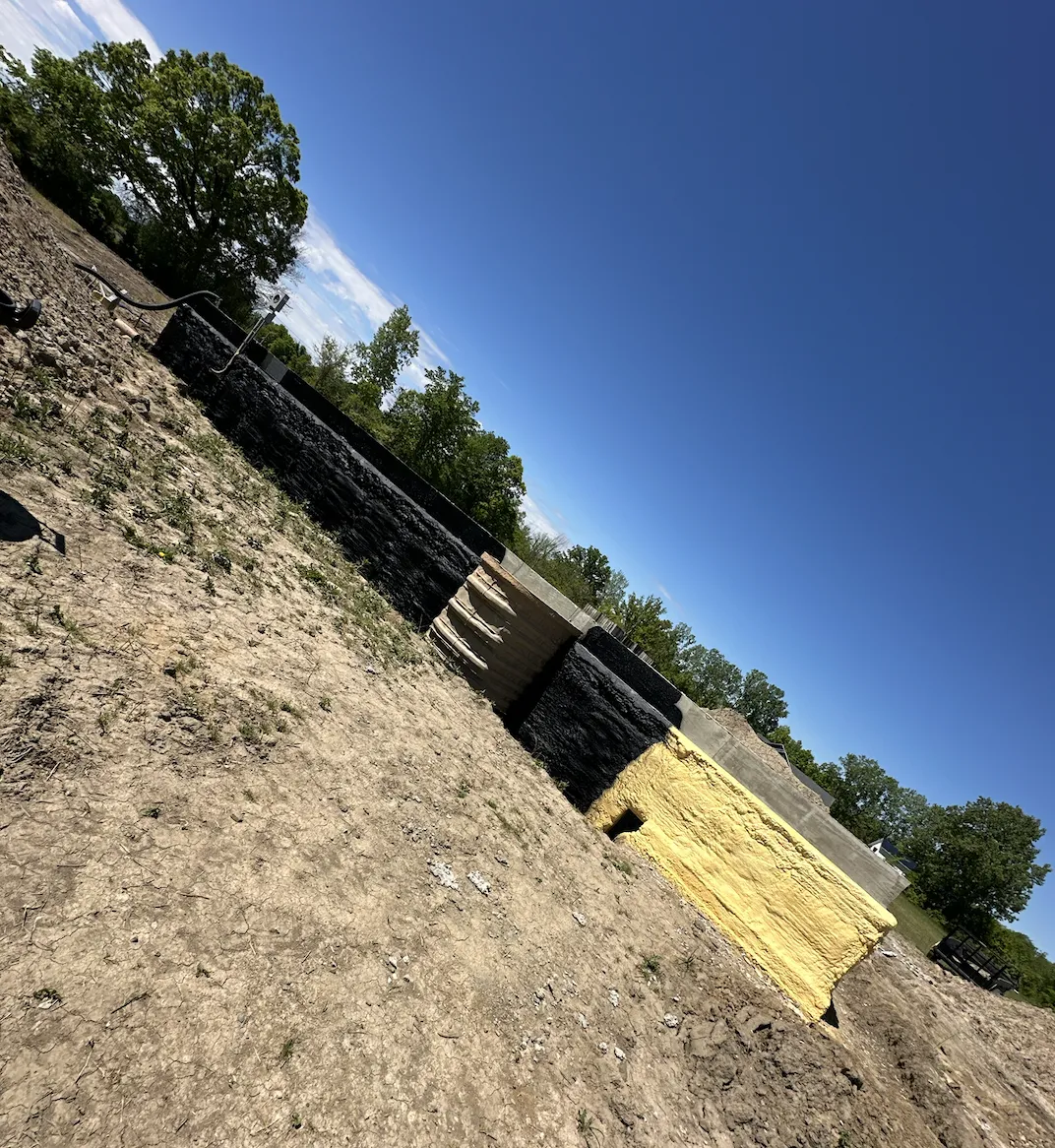
Energy Efficiency & Comfort Boost
Closed-cell foam doesn’t just insulate—it reinforces. Once cured, it adds rigidity to foundation walls, enhancing overall structural stability. Its dense composition also makes it mold-resistant, pest-resistant, and built to last—30+ years of performance with minimal degradation. And when paired with proper sand backfilling, you’re doubling down on long-term strength—reducing external pressure on your foundation and preserving the integrity of every layer you've invested in.
Traditional Approach
Foam Board and Seal Approach
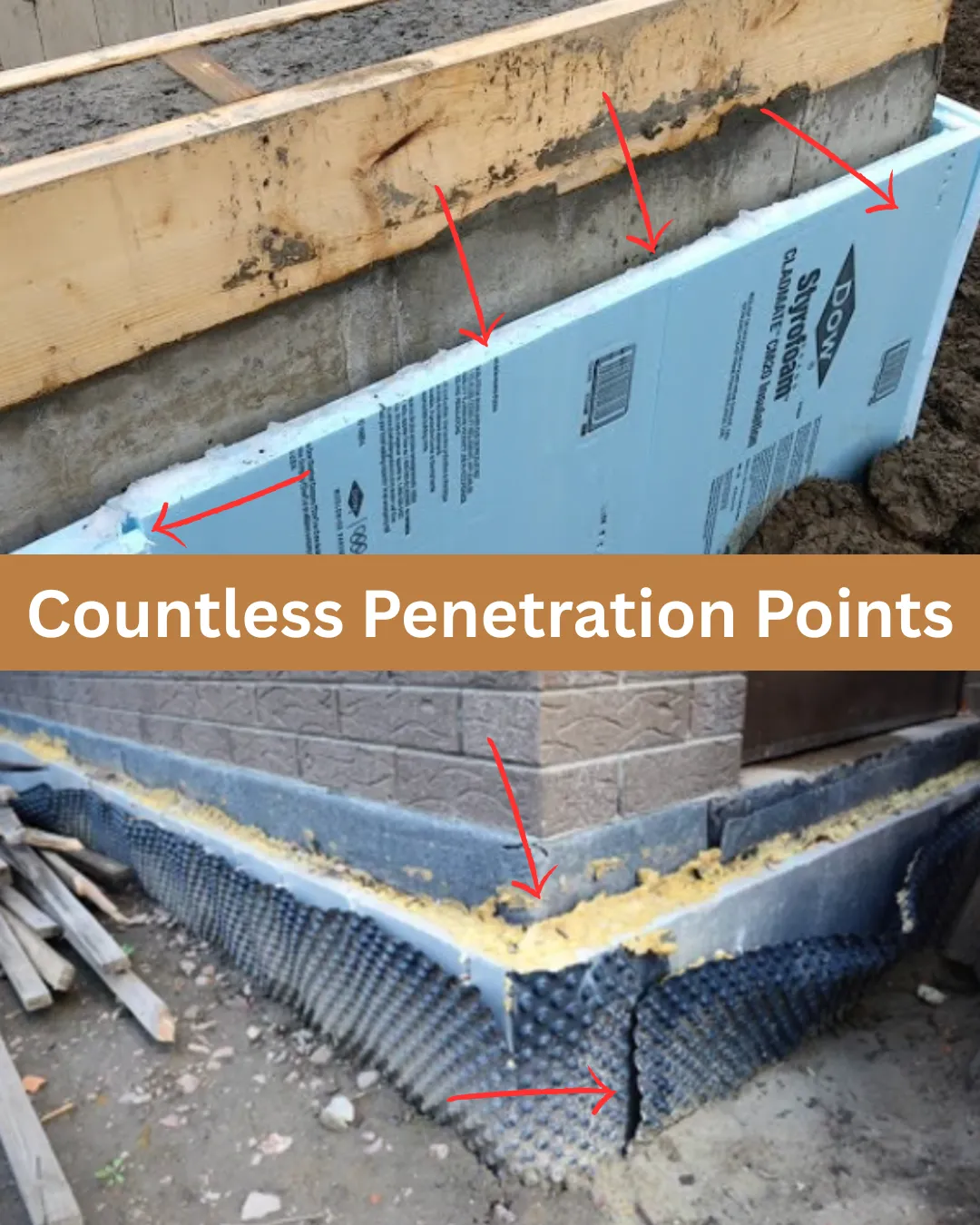
Genex Approach
Closed Cell Spray Foam and Waterproofing Approach
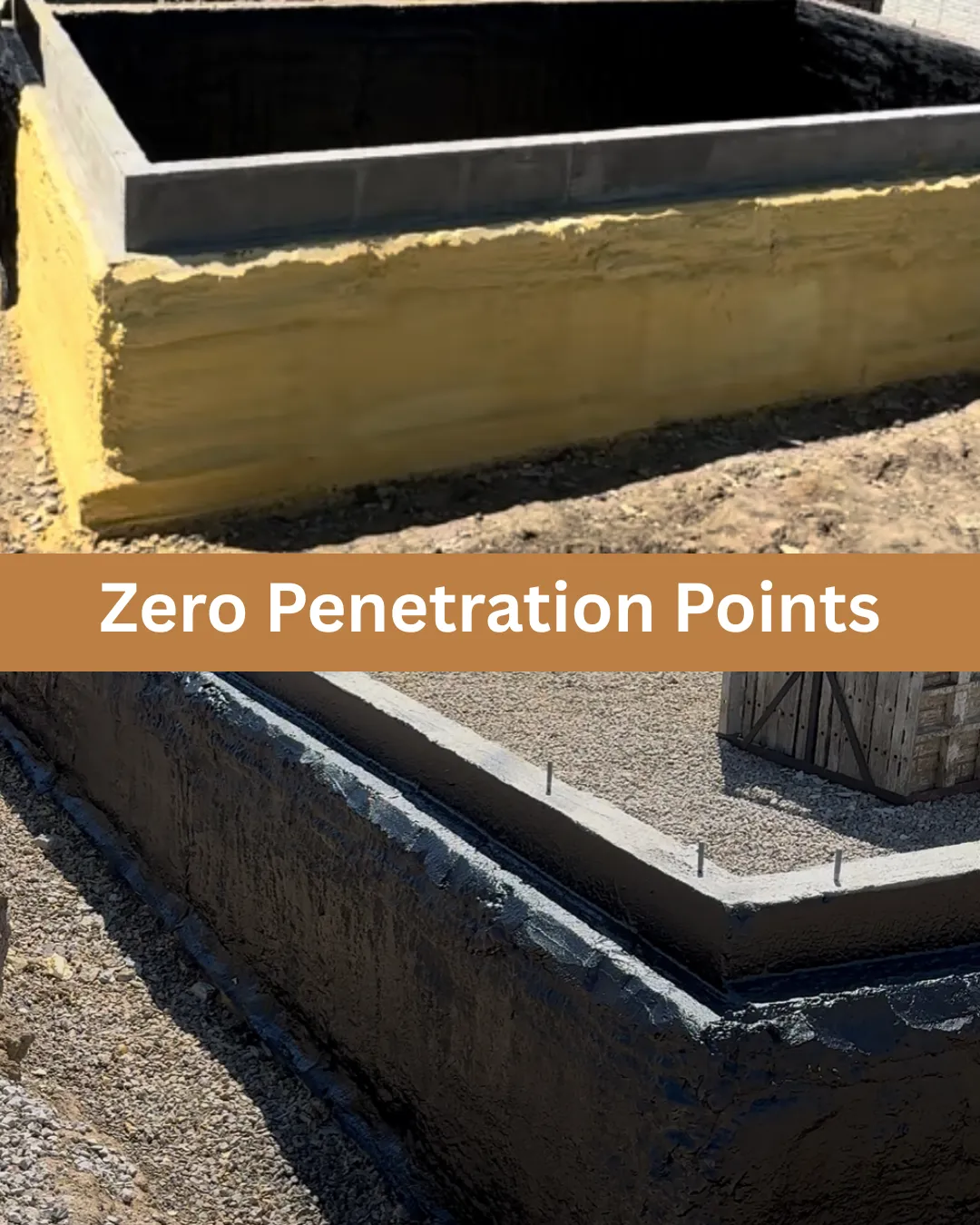
How Genex Is Setting a New Standard in Foundation Systems
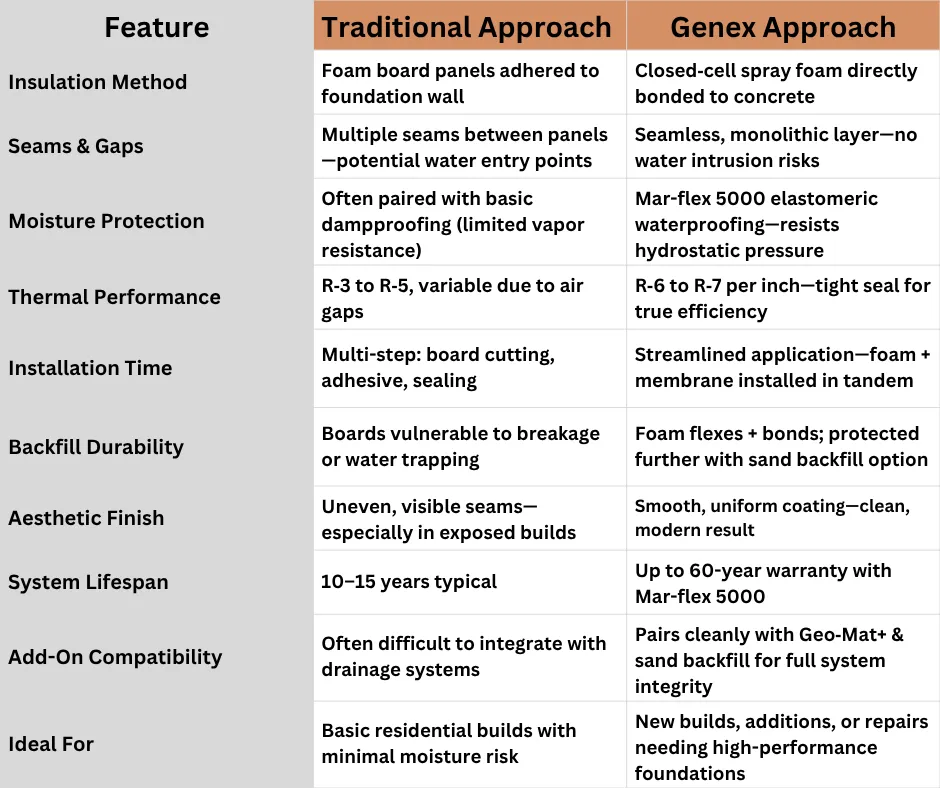
Though not yet mainstream in residential markets, closed-cell spray foam insulation is rapidly becoming the gold standard among professionals who understand the long-term importance of protecting a home’s foundation—especially in new builds, additions, and structural repairs. Traditional foam board insulation is installed in sheets, which means lots of seams, lots of cuts, and lots of mess. These seams create countless opportunities for moisture intrusion and entrapment, and the adhesive-based install method adds more vulnerability.
Foam boards are also notoriously sloppy in appearance, with uneven surfaces and visible joints that can detract from the clean build you're aiming for in a new home. Closed-cell spray foam solves all of this: it adheres directly to the concrete wall, forming a seamless, airtight, and watertight membrane that’s as clean as it is effective. It locks in R-value, regulates thermal stress, and boosts energy efficiency—all while preserving the professional finish your project deserves. The upfront cost is quickly offset by years of comfort, structural protection, and peace of mind.
Because the little things? They aren’t so little when you're building something that’s meant to last.
Why We Backfill with Sand
Especially When You’ve Upgraded to Foam
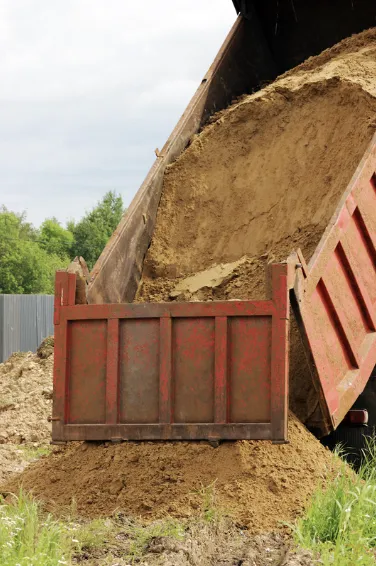
Backfill That Defends Your Investment—Not Just the Drainage
At Genex Coatings, we treat closed-cell foam insulation as more than an upgrade—it’s a high-performance barrier that demands protection. That’s why we pair it with sand backfill as part of a smarter, more integrated system.
You’ve already taken the step to insulate your foundation with superior materials. But if you surround that insulation with rocky or clay-based soil during backfill, you’re risking scratches, punctures, and long-term damage to the very layer meant to protect your home.
That’s where sand makes all the difference.
Unlike native fill, sand cushions your insulation during the backfill process—preventing abrasions, tearing, or pressure that could compromise the foam’s airtight seal. And it’s not just about contact protection. Sand also supports faster, more efficient drainage to relieve hydrostatic pressure, preserve insulation integrity, and reduce wear across the entire system.
It’s smart protection for smart builders.
This used to be standard. Before cost-cutting nudged it out of the picture, sand backfill was just how it was done. At Genex, we’re bringing that logic back—and elevating it by pairing it with high-performance insulation systems that deserve to last.
If you’ve invested in foam, protect it.
Sand backfill is the last, intelligent step in a system built to stay strong, dry, and resilient for years to come.

